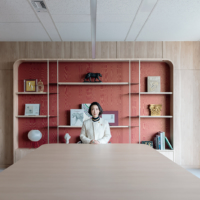OSAKA -- Since the end of the bubble era, the Kansai region's economy has fared worse than many other parts of Japan.
Once a center of manufacturing, Kansai has fallen behind in embracing new technologies, while small and large investors have fled the area for Tokyo or overseas.
But now, the region wants to reverse this trend and transform itself into a tourism center and a hub of high-tech industry.
In an effort to stop the outflow of capital and human resources and attract investment in the information technology sector, the Kansai Economic Federation (Kankeiren) on April 9 unveiled a set of plans for fiscal 2001 with special emphasis on 11 areas, ranging from the expansion of e-business networks to an increase in the level of computer-aided design and technology research.
It also calls for conducting a survey on how effectively tax money is being spent locally.
This is an area of special concern to Kankeiren, which is pushing for further consolidation of municipalities to reduce redundant services, improve efficiency and facilitate corporate investment in Kansai.
"The introduction of IT to the Kansai region has lagged behind other parts of Japan, partially because it took longer to convince Kansai businesses of the importance of information technology," said Kankeiren Chairman Yoshihisa Akiyama in announcing the plan.
The latest set of plans under the Kansai Economic Rebirth Scenario, a series of basic principles drawn up in 1999, has been compiled based on Kankeiren's recent survey of companies across the country.
Of the nearly 2,000 companies that responded to the survey, most said that Kansai's well-developed transport infrastructure was its biggest advantage.
However, the region's communication and academic research infrastructure was underdeveloped compared with those in Tokyo, according to the survey.
The survey also compared political leadership among nine prefectures in Kansai and nearby areas -- Osaka, Kyoto, Hyogo, Wakayama, Nara, Shiga, Mie, Fukui and Tokushima -- in attracting new businesses.
The Hyogo and Mie Prefectural governments were given high marks for making various efforts to attract new businesses, while Nara Prefecture, ranked first for its natural environment, came last in trying to invite new businesses.
"That's fine with us," said one Kankeiren official from Nara Prefecture, speaking on the condition of anonymity. "We wish to be known as the prefecture that places priority on the environment and has lots of greenery. We think that's more important than trying to copy what Osaka or Kyoto is doing."
As to the second major strategy of becoming a tourist center, local officials are counting on the area's historical centers of Kyoto and Nara, combined with the Universal Studios Japan theme park in Osaka, to attract a large influx of tourists.
To help achieve that end, Kansai has introduced or is considering the introduction of various schemes to make it easier for tourists to travel around the region. Among those measures are discount train passes, new rail lines that make it easier to get around Osaka and the promotion of various Kansai package tours.
However, access to Osaka from other parts of the Kansai region is still a problem.
Akiyama confirmed that, only one week into opening of USJ, he was hearing reports that visitors from Kyoto and Wakayama prefectures find the new theme park difficult to get to.
Nevertheless, he pronounced himself satisfied with USJ's progress to date.
"After one week, nearly 200,000 people have passed through the gates," Akiyama said.
Some 8 million people are expected to visit the park in its first year, and Kansai officials hope it will be a key tourist stop in the region along with the Fashion Museum and Ijinkan district in Kobe, major temples in Kyoto and Nara, and Osaka's Tempozan harbor district.

















With your current subscription plan you can comment on stories. However, before writing your first comment, please create a display name in the Profile section of your subscriber account page.